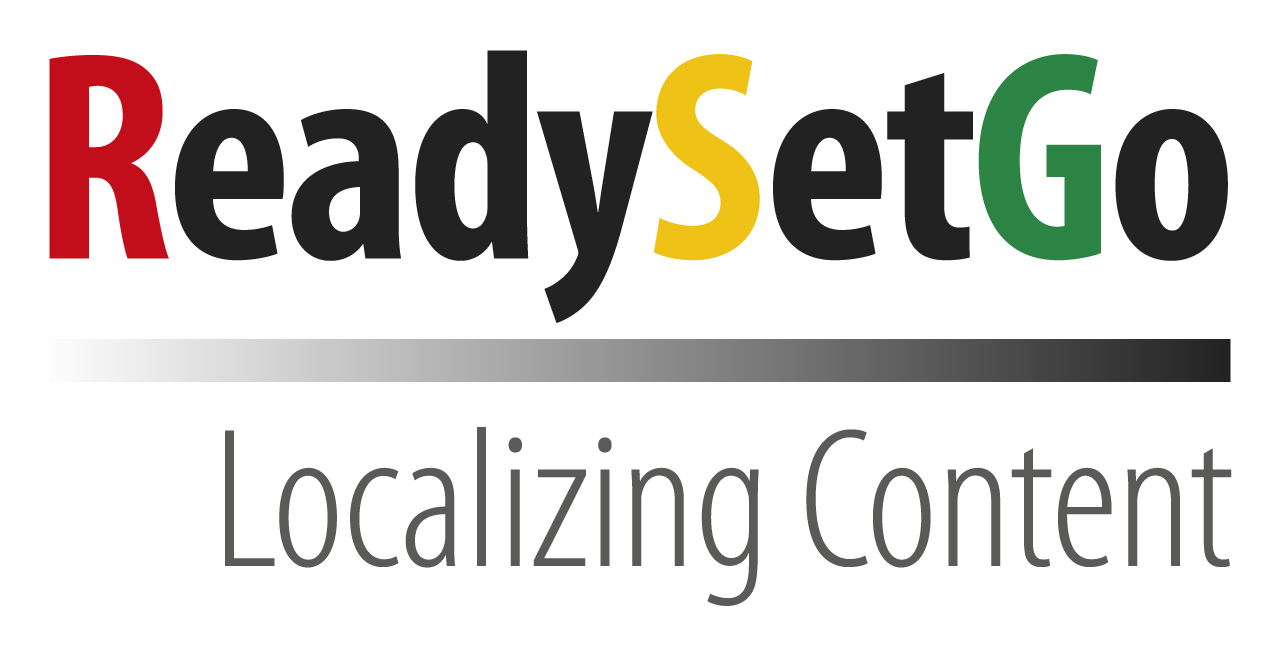Global Content Effectiveness: A Brief Interview with Bruno Herrmann

ALEX: Hello everyone, my name is Alex Bernet and I work at The Localization Institute and I’m happy to be here today talking with our instructor Bruno Herrmann about the new ReadySetGo Localizing Content class he created and will be teaching for us.
Hi Bruno, thanks for spending time with me to answer a few questions about the new class.
BRUNO: It’s great to be here, Alex and thanks for having me today.
ALEX: We are thrilled to have you joining our accomplished group of faculty at The Localization Institute and we’re really excited about sharing your expertise in global content effectiveness with localization professionals around the world. The first class takes place on Wednesday, May 17th and full details on the class are available here on The Localization Institute website and registration is now open.
The title of the new class is ReadySetGo: Localizing Content. I know that your perspective is really more nuanced though Bruno than favoring the traditional method of simply creating content in one language and then translating or localizing it into other languages. What do you mean when you talk about measuring “global content effectiveness” and how does that transcend the traditional model that many companies are still using today?
BRUNO: That’s a great question, Alex and indeed I put a lot of focus on global content effectiveness. When you refer to the traditional model that many companies are still using, they are often considering translation and localization just (so to speak) as a matter of words, as a matter of linguistics. But actually, language is much more than that and that’s why I put content effectiveness at the forefront of what should be reconsidered, by not just localization people, but by content leaders in general. Measuring content effectiveness implies actually going above and beyond – well some companies are calling it “quality” but I prefer “effectiveness” because quality can be rather subjective. I struggled with that term myself in the past. One day, I said to myself that we really need to have something much more tangible and more value driven based on KPIs. That’s why I developed and implemented a model of global content effectiveness based on three main factors: linguistic effectiveness, which is actually what people know most of the time as it is about having the content in the right language using the right spelling, the right grammar, the right syntax, etc. In addition to linguistic effectiveness, I’m adding cultural effectiveness. Cultural effectiveness refers to the values that people have and how they’re going to perceive the content and how they’re going to receive it when they consume it. So it’s not just a matter of using the right words but also the right framework, the right colors, the right images and everything that relates to their culture and where they are geographically speaking. Last but not least it’s also a matter of functional effectiveness. We are now in the age of digital content and AI-driven applications and so it’s very important to make sure that content is rendered properly while also matching the right cultural references. It must work in every ecosystem and in every environment that is relevant for customers. Of course, a customer in China has a different ecosystem or environment than a customer in Brazil or in Germany, for instance. So making sure that the content works well in all expected environments is also very important. When you bundle these three effectiveness drivers together, this is what I mean by global content effectiveness and this is why I created the new class.
ALEX: So let’s dive a little deeper into that you know part of the message that you deliver. You stress elevating and enriching content localization in order to turn it from a cost center into a profit driver within an organization. Can you say a little bit more about what that actually means and where does the change start within an organization to make that a reality?
BRUNO: Well, it’s more than a question, it’s a challenge actually. Typically, I’ve seen in many cases that localization teams or localization people were considered only as service providers and because of that they were not a real part of the content supply chain that most companies must have. So it’s not just about multinational companies, it’s about any company. Any globalization organization has a global content supply chain to manage and to deliver on. Typically, localization people are connected to that value chain but they are not actually a part of it and they are not always engaged in a timely fashion. Essentially, what is really important here is to make sure that localization people and localization processes are truly embedded within any content supply chain. This is necessary so they can work properly and effectively with other people involved in that supply chain: content producers, content testers and the people who are delivering the content. This way, localization becomes much more streamlined and timely and can go beyond being just a service. Localization people are still a cost center first but they also eventually contribute to being a profit driver and that’s really important in terms of transformation within an organization. It’s not just a functional or an organizational question, it’s really an operational challenge.
ALEX: You explored these ideas further in a recent article published in MultiLingual Magazine titled “Increasing Localization Value As Global Language Operations.” To quote you, “When I tell localization folks that I prefer to refer to localization as ‘global language operations,’ under the larger umbrella of global content operations, many react skeptically. Sometimes, they even respond by accusing me of ‘diluting’ localization in a broader framework. I typically reply that language operations offer a safe path to increase, demonstrate, and capture the value of localization.” Can you please explain what you mean by “the safe path” and how do you demonstrate that to upper management?
BRUNO: Yeah, that’s a great question too so when I say it’s a safe path I mean that embedding localization in the global or in the regional content supply chain(s) is going to generate a number of benefits for localization people to be part of what is really generating value and is therefore driving growth: delivering content. I can understand that some people might be a little bit skeptical about this sort of move or even reluctant to make that move happen because there may be a sense of pride sometimes to be a localization team or a localization leader and then say “okay, this is my team and you have to consider us as a business partner” but if you are not really integrated in what the global organization is doing, your pride might turn into some sort of Ivory Tower. And that’s what I mean by “safe path.” It’s actually a way to gradually become embedded (because it cannot happen overnight) and to be recognized as an effective part of the supply chain by creating value and delivering immersive customer experiences. To be honest, dilution is not really a risk here, in my opinion, because in many cases localization teams that are not part of the global supply chains are already diluted in the organization. You cannot be any more diluted than that. My point is to say that the way it is today for most organizations, with localization teams only having loose connections or loose integration with content operations is not working well. By being part of (global) content operations, the dilution will disappear because you will have the same status and the same role to play in the supply chain as the content creators, the content testers or the user experience people. That is what I mean by a safe path hare, or I could instead say the “effective path.”
ALEX: Let’s address the user experience angle a bit further. I’d like to read another quote briefly from the article: “Ultimately, I’d argue that local customers are most impacted by a poor understanding of localization as they’re the ones who receive poorly localized content and services. This explains why some localized content may reek of translation instead of being perceived by local customers as something specifically designed for their market.” Can you talk about how localization effectiveness is directly tied to the user experience and how the former can break the latter and disrupt the value chain that enables business to deliver local customer experiences?
BRUNO: The level of localization effectiveness can absolutely make or break customer experiences and user experience. The first thing I would say is that localization effectiveness is often measured only in a very narrow way. This is the mistake I was mentioning before. When organizations are only considering localization as the adaptation in terms of language requirement, this is a mistake because in that case, you can have some great translated content in French or in Italian or in simplified Chinese but of course the user experience is not just about that. It’s also about how these words will fit in the cultural framework of consumers and how those words will fit in their digital ecosystems. Here, “localization effectiveness” might be misleading if it’s not comprehensive. That’s really the lesson that has to be learned here. To go back to my point about global content effectiveness, this is where localization has to be considered as more than just people putting some words into a different language. This is where I see an opportunity to collaborate and to find synergies between localization people and the user experience team. UX people have expertise about making content look good and work nicely, because localization people also have the experience of preparing the content to look good and work nicely. They should work together in preparing content to be effective because that’s how you can actually increase the value of what your colleagues are doing. Your UX colleagues might not have the linguistic or the cultural expertise that you have as a localization leader.
ALEX: This is such a fascinating and insightful perspective, Bruno. The last thing I want to touch on are the challenges and the problems that global companies are facing today. Let’s look forward now. One of the key takeaways that you’re offering students is the opportunity to learn how to build and leverage a “content localization ecosystem.” Can you talk about what an ideal scenario might look like for a global company? How would this be set up?
ALEX: Bruno, thank you very much for spending the time to talk with me today. On a personal level, we’ve been friends since we met at Brand2Global Conference in London back in 2014 and I couldn’t be more excited to have you joining The Localization Institute team of faculty this year. For more information on Bruno’s ReadySetGo: Localizing Content class, please visit the course website. You can also email me at alex@localizationinstitute.com and I would be happy to share any questions you have with Bruno. Thanks again for your time, Bruno.
BRUNO: You are most welcome, Alex. Have a great day and thank you for discussing the new class with me. I’m very excited for the first edition on May 17th.
Disclaimer: Copyright © 2021 The Localization Institute. All rights reserved. This document and translations of it may be copied and furnished to others, and derivative works that comment on or otherwise explain it or assist in its implementation may be prepared, copied, published, and distributed, in whole or in part, without restriction of any kind, provided that the above copyright notice and this section are included on all such copies and derivative works. However, this document itself may not be modified in any way, including by removing the copyright notice or references to The Localization Institute, without the permission of the copyright owners. This document and the information contained herein is provided on an “AS IS” basis and THE LOCALIZATION INSTITUTE DISCLAIMS ALL WARRANTIES, EXPRESS OR IMPLIED, INCLUDING BUT NOT LIMITED TO ANY WARRANTY THAT THE USE OF THE INFORMATION HEREIN WILL NOT INFRINGE ANY OWNERSHIP RIGHTS OR ANY IMPLIED WARRANTIES OF MERCHANTABILITY OR FITNESS FOR A PARTICULAR PURPOSE.


